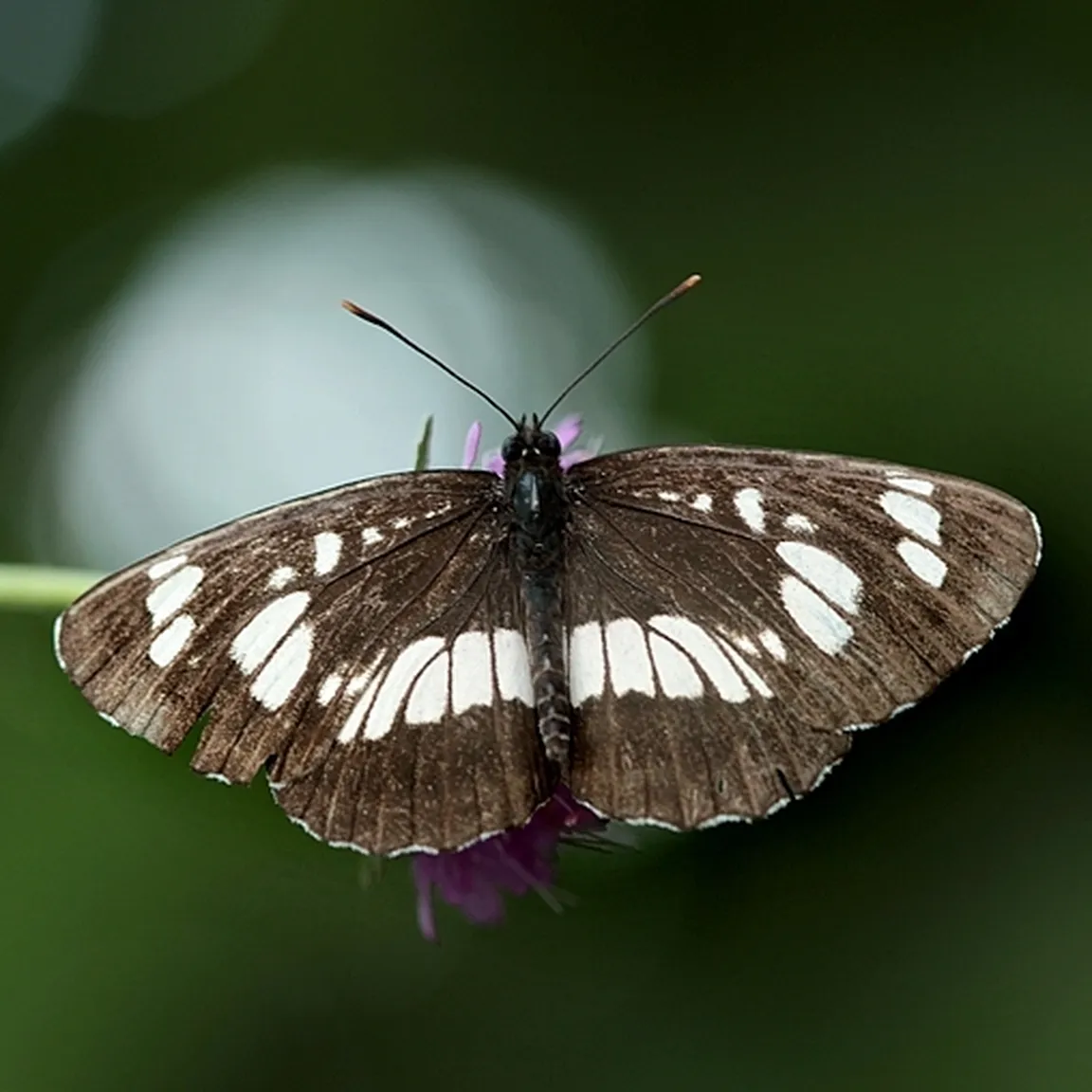Wingspan: 40–50 mm
Butterflies' flight period: in one generation from mid-May to August
Larval host plants: commonly known as goat's beard (Aruncus dioicus), species from the genus Spiraea
Great fritillary (Neptis rivularis) has the upperside of the wings basically dark brown to black with a pattern of large elongated white patches. The white patches on the hindwings are arranged in a single row. On the forewings, the row of large white patches is broken and offset, and in the inner part of the wings there are a few more small white spots. The underside of the wings is basically reddish brown, the silhouette of the wings is interrupted by the same pattern of large white patches as on the upperside. Between the outer edge and the band of white spots on the underside of the wings, fritillaries do not have the black spots typical of butterflies from the skipper genus.
The Great fritillary is widespread throughout Slovenia, but often occurs very locally. It inhabits bright, yet moist deciduous and mixed forests, meadows, glades, and forest edges. It prefers to live in forested valleys along streams and rivers. Its characteristic flight over a stream or along the forest edge can be observed especially in the lowlands and lower montane regions, up to 1000 m above sea level.
In Slovenia, the Great fritillary is not a threatened species, as it is tied to forest habitats that are plentiful here.


